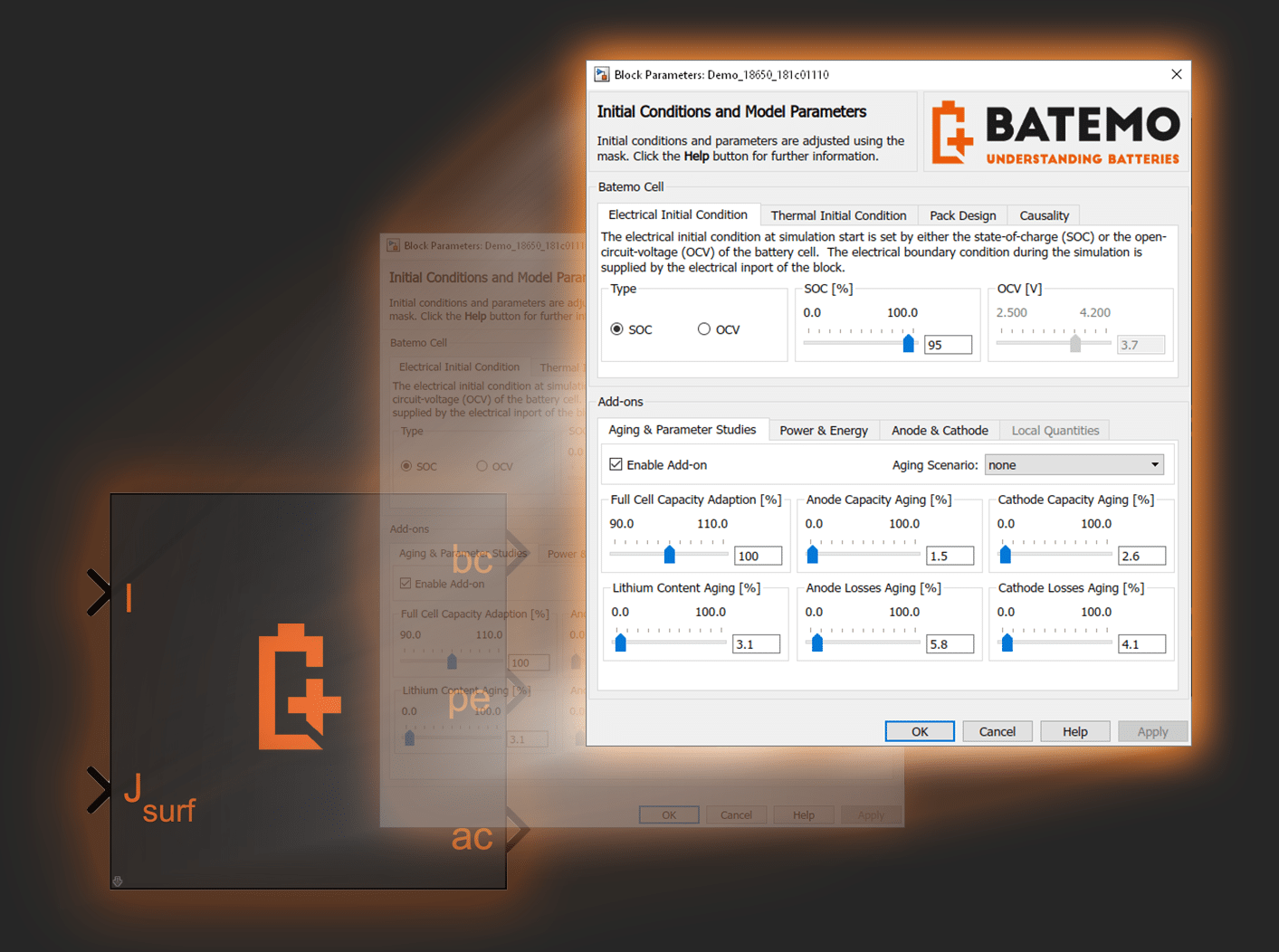Batemo Cell Models are the most accurate battery cell models.
Our Promise:
If you can show us another battery cell model that is more accurate, we will refund your money!
show the ruleshide
Battery Software
A Batemo Cell Model is a fast, physical and high-precision battery cell model for accurate battery simulations. Through optimized modeling and parameterization methods, we easily and quickly create Batemo Cell Models for all types of battery cells and chemistries. With a flexible interface and simulation times of seconds, the Batemo Cell Models integrate seamlessly into your research and development processes. On that basis, you solve the major challenges of battery development.
Fast
Physical
Accurate
Batemo Cell Model
Library

Custom
Batemo Cell Model
Modeling batteries with Batemo Cell Models is easy. Just like the real battery cell, the Batemo Cell Model has an electrical and a thermal interface. The interface is designed to make integration straight-forward: Setting initial conditions is intuitive and comfortable using the graphical parameter interface. Then you supply the electrical and thermal boundary conditions and are ready to go.
This is how you simulate the dynamic performance of the battery cell under all conditions. Everything you can do with the real cell, you can now do with the Batemo Cell Model in your simulations. This is not only true for data you can measure in the laboratory. The Batemo Cell Model calculates additional, highly relevant internal cell quantities: inner temperatures, electrochemical electrode potentials or insights about loss generation.

Integration
We integrate the Batemo Cell Models into your simulation environment. This makes building on your previous work and technical onboarding super easy. Built-in integration is available for MATLAB Simulink, MATLAB Simscape, AVL CRUISE M, AVL Fire M, Elements and Cradle CFD. Additionally, Batemo Cell Model FMUs allow integration into all common simulation tools.
To give you a smooth onboarding, we schedule regular calls with Batemo Support to get started. Moreover, you get ready to use models and permanent access to the Batemo video tutorials that introduce all features and show best-practice examples. To get you started, another option is to let Batemo Engineering do your modeling and simulation work in an initial project. We deliver all models, scripts and data so that you can take over from there.
Applications
You use the Batemo Cell Models to make your battery development simulation-based, making it faster, lower cost while leading to better products. This is how we generate value and contribute to your success.
-
Aging and Lifetime
Reach the longest lifetime by understanding how and why your cells age.
-
Cell Benchmarking
Use the best cells in your product by continuously scanning the battery cell market in respect to your key performance indicators.
-
Fast-Charging
Charge the fastest by developing strategies that fast-charge at the limit without aging the cells.
-
Battery Cell Design
Design your next-generation battery cell with unique KPIs on target to dominate the market.
-
AI Development
Develop the best AI methods by employing the Batemo Cell Models as source for training data.
-
System Optimization
Build the best system by identifying the optimal design and operation strategy.
-
Thermal Modeling
Design the best thermal system and associated operating strategy through extensive Batemo Cell Model simulation studies across the entire operating range.
-
BMS Development
Develop best-in-class BMS algorithms by putting Batemo Cell Models in the loop for state and parameter estimation.











